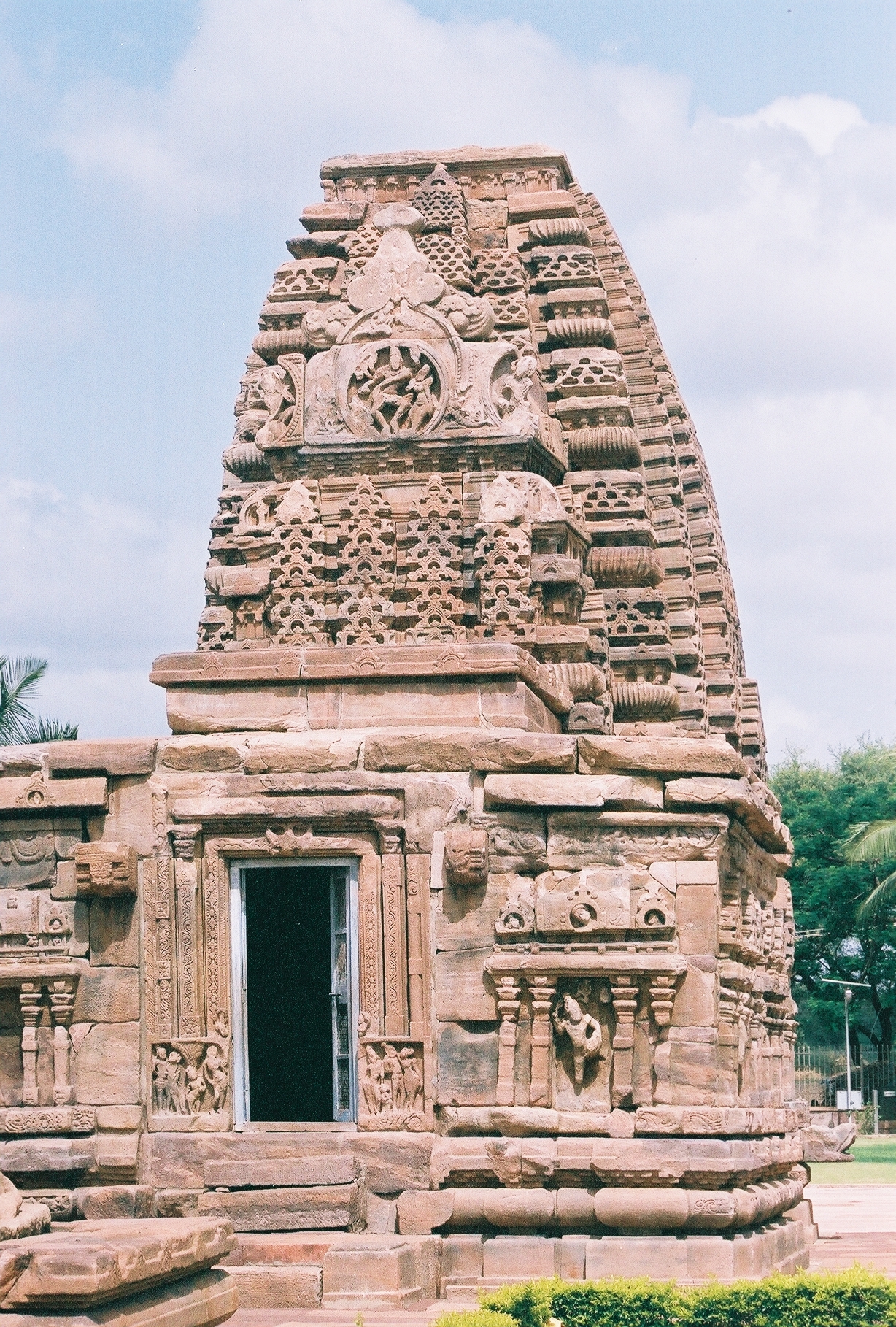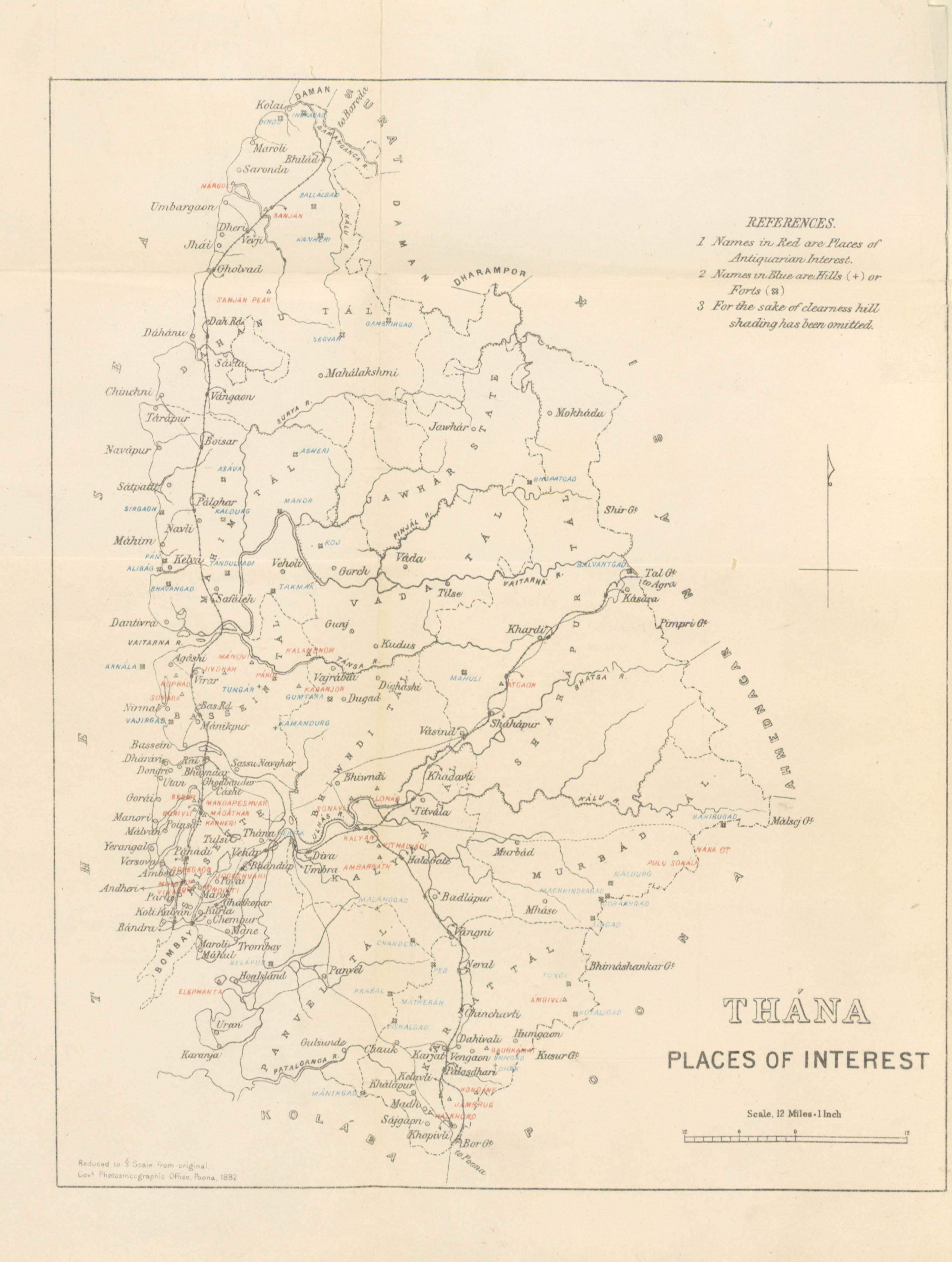|
Kapardin I
Kapardin I was Shilahara ruler of North Konkan branch from c. 800 CE – 825 CE. He was the first known Shilahara king of North Konkan, was placed in charge of the country by the Rashtrakuta king Govinda III. Since then North Konkan came to be known as Kapardi-dvipa or Kavadi-dvipa. The capital of this branch was Puri, after which the country was called Puri-Konkan . Their capital seems to have been Puri and their places of note were Hamjaman probably Sanjan in Dahanu, Thane (Shristhanak), Sopara (Shurparak), Chaul (Chemuli), Lonad (Lavanatata) and than. As the Yadavas call themselves lords of the excellent city of Dvaravatipura or Dwarka and the Kadambas call themselves lords of the excellent city of Banavasipura or Banavasi, so the Shilaharas call themselves lords of the excellent city of Tagarapura or Tagar. This title would furnish a clue to the origin of the Shilaharas it unfortunately, the site of Tagar was not uncertain. From numerous references and grants the Thane Shi ... [...More Info...] [...Related Items...] OR: [Wikipedia] [Google] [Baidu] |
Shilahara
Shilahara was a royal dynasty that established itself in northern and southern Konkan in 8th century CE, present-day Mumbai and Southern Maharashtra ( Kolhapur) during the Rashtrakuta period. The founder of the Shilahara dynasty, Sanaphulla, was a vassal of the Rashtrakuta ruler, Krishna I. The Shilaharas continued to be vassals under the Rashtrakutas until 997, when Aparajit assumed independent rule. The Shilahara dynasty had three branches: the northern Konkan branch, the southern Konkan branch (765–1029) and a third branch in Kolhapur, Satara and Belagavi (940–1215) who were defeated by the Yadavas. North Konkan (Thane) branch (c. 800–1265 CE) After Rashtrakuta power became weak, the last known ruler of this family, Rattaraja, declared his independence. But Chalukya Jayasimha, the younger brother of Vikramaditya, overthrew him and appropriated his possessions. The second northern Shilahara king, Pullashakti, acknowledged the overlordship of the Rashtrak ... [...More Info...] [...Related Items...] OR: [Wikipedia] [Google] [Baidu] |
Pullashakti
Pullashakti was Shilahara ruler of north Konkan branch from 825 CE – 850 CE. Kapardin I was succeeded by his son Pullashakti who has left a much-abraded inscription in Kanheri cave No. 73. In the Kanheri cave inscription Pullashakti is called Mahasamanta and is described as the lord of Puri-Konkan a, which he had obtained by the favour of the Rashtrakuta king Amoghavarsha I. The inscription records the endowment of 24 dramas made by one Vishnugupta for the repairs of the cave as well as for the raiment and books of the monks dwelling in Krishnagiri (Kanheri).(Dept. Gazetteer: 2002) See also * Shilahara Shilahara was a royal dynasty that established itself in northern and southern Konkan in 8th century CE, present-day Mumbai and Southern Maharashtra ( Kolhapur) during the Rashtrakuta period. The founder of the Shilahara dynasty, Sanaphulla, ... References * Bhandarkar R.G. (1957): Early History of Deccan, Sushil Gupta (I) Pvt Ltd, Calcutta. * Fleet J.F (1896): "The D ... [...More Info...] [...Related Items...] OR: [Wikipedia] [Google] [Baidu] |
Konkan
The Konkan is a stretch of land by the western coast of India, bound by the river Daman Ganga at Damaon in the north, to Anjediva Island next to Karwar town in the south; with the Arabian Sea to the west and the Deccan plateau to the east. The hinterland east of the coast has numerous river valleys, riverine islands and the hilly slopes known as the Western Ghats; that lead up into the tablelands of the Deccan. The Konkan region has been recognised by name, since at least the time of Strabo, in the third century CE. It had a thriving mercantile port with Arab tradesmen from the 10th century onwards. The best-known islands of Konkan are Ilhas de Goa, the site of the Goa state's capital at Panjim; also, the Seven Islands of Bombay, on which lies Mumbai, the capital of Maharashtra & the headquarters of Konkan Division. Definition Historically, the limits of Konkan have been flexible, and it has been known by additional names like " Aparanta" and "Gomanchal", the lat ... [...More Info...] [...Related Items...] OR: [Wikipedia] [Google] [Baidu] |
Rashtrakuta
The Rashtrakuta Empire was a royal Indian polity ruling large parts of the Indian subcontinent between the 6th and 10th centuries. The earliest known Rashtrakuta inscription is a 7th-century copper plate grant detailing their rule from Manapur, a city in Central or West India. Other ruling Rashtrakuta clans from the same period mentioned in inscriptions were the kings of Achalapur and the rulers of Kannauj. Several controversies exist regarding the origin of these early Rashtrakutas, their native homeland and their language. The Elichpur clan was a feudatory of the Badami Chalukyas, and during the rule of Dantidurga, it overthrew Chalukya Kirtivarman II and went on to build an empire with the Gulbarga region in modern Karnataka as its base. This clan came to be known as the Rashtrakutas of Manyakheta, rising to power in South India in 753 AD. At the same time the Pala dynasty of Bengal and the Prathihara dynasty of Gurjaratra were gaining force in eastern and northwes ... [...More Info...] [...Related Items...] OR: [Wikipedia] [Google] [Baidu] |
Thane
Thane (; previously known as Thana, List of renamed Indian cities and states#Maharashtra, the official name until 1996) is a metropolitan city located on the northwestern side of the list of Indian states, state of Maharashtra in India and on the northeastern side of Mumbai. It is an immediate neighbour of Mumbai city proper, and a part of the Mumbai Metropolitan Region. It is situated in the north-eastern portion of the Salsette Island. Thane city is situated entirely within Thane taluka, one of the seven talukas of Thane district. It serves as the headquarters of the district. Thane city ranks as the 15th most populous city in India, with a population of 1,890,000 according to the 2011 census. Etymology and other names The ancient name of Thana was . It appears as in early medieval Arab sources. The name Thane has been variously Romanised as Tana, Thana, Thâṇâ, and Thame. Ibn Battuta and Abulfeda knew it as KukinTana; Duarte Barbosa as TanaMayambu. Before Renaming of ... [...More Info...] [...Related Items...] OR: [Wikipedia] [Google] [Baidu] |
Yadavas Of Devagiri
The Seuna, Sevuna, or Yadavas of Devagiri (IAST: Seuṇa, –1317) was a medieval Indian dynasty, which at its peak ruled a realm stretching from the Narmada river in the north to the Tungabhadra river in the south, in the western part of the Deccan region. Its territory included present-day Maharashtra, northern Karnataka and parts of Madhya Pradesh, from its capital at Devagiri (present-day Daulatabad in modern Chhatrapati Sambhajinagar district, Maharashtra). The Yadavas initially ruled as feudatories of the Western Chalukyas. Around the middle of the 12th century, as the Chalukya power waned, the Yadava king Bhillama V declared independence. The Yadavas reached their peak under Simhana II, and flourished until the early 14th century, when it was annexed by the Khalji dynasty of the Delhi Sultanate in 1308 CE. Etymology The Seuna dynasty claimed descent from the Yadavas and therefore, its kings are often referred to as the "Yadavas of Devagiri". The correct name of th ... [...More Info...] [...Related Items...] OR: [Wikipedia] [Google] [Baidu] |
Kadambas
The Kadamba dynasty were an ancient royal family from modern Karnataka, India, that ruled northern Karnataka and the Konkan from Banavasi in present-day Uttara Kannada, Uttara Kannada district in India. The kingdom was founded by Mayurasharma in , and at later times showed the potential of developing into imperial proportions. An indication of their imperial ambitions is provided by the titles and epithets assumed by its rulers, and the marital relations they kept with other kingdoms and empires, such as the Vakataka dynasty, Vakatakas and Gupta Dynasty, Guptas of North India, northern India. Mayurasharma defeated the armies of the Pallavas of Kanchi possibly with the help of some native tribes and claimed sovereignty. The Kadamba power reached its peak during the rule of Kakusthavarma. The Kadambas were contemporaries of the Western Ganga dynasty and together they formed the earliest native kingdoms to rule the land with autonomy. From the mid-6th century the dynasty con ... [...More Info...] [...Related Items...] OR: [Wikipedia] [Google] [Baidu] |
Shiva
Shiva (; , ), also known as Mahadeva (; , , Help:IPA/Sanskrit, [mɐɦaːd̪eːʋɐh]) and Hara, is one of the Hindu deities, principal deities of Hinduism. He is the God in Hinduism, Supreme Being in Shaivism, one of the major traditions within Hinduism. Shiva is known as ''The Destroyer'' within the Trimurti, the Hinduism, Hindu trinity which also includes Brahma and Vishnu. In the Shaivite tradition, Shiva is the Supreme Lord who creates, protects and transforms the universe. In the goddess-oriented Shaktism, Shakta tradition, the Supreme Goddess (Devi) is regarded as the energy and creative power (Shakti) and the equal complementary partner of Shiva. Shiva is one of the five equivalent deities in Panchayatana puja of the Smarta Tradition, Smarta tradition of Hinduism. Shiva has many aspects, benevolent as well as fearsome. In benevolent aspects, he is depicted as an Omniscience, omniscient yogi who lives an Asceticism#Hinduism, ascetic life on Kailasa as well as a house ... [...More Info...] [...Related Items...] OR: [Wikipedia] [Google] [Baidu] |
9th-century Indian Monarchs
The 9th century was a period from 801 (represented by the Roman numerals DCCCI) through 900 (CM) in accordance with the Julian calendar. The Carolingian Renaissance and the Viking raids occurred within this period. In the Middle East, the House of Wisdom was founded in Abbasid Baghdad, attracting many scholars to the city. The field of algebra was founded by the Muslim polymath al-Khwarizmi. The most famous Islamic scholar Ahmad ibn Hanbal was tortured and imprisoned by Abbasid official Ahmad ibn Abi Du'ad during the reign of Abbasid caliph al-Mu'tasim and caliph al-Wathiq. In Southeast Asia, the height of the Mataram Kingdom happened in this century, while Burma would see the establishment of the major kingdom of Pagan. Tang China started the century with the effective rule under Emperor Xianzong and ended the century with the Huang Chao rebellions. In America, the Maya experienced widespread political collapse in the central Maya region, resulting in internecine warfare, ... [...More Info...] [...Related Items...] OR: [Wikipedia] [Google] [Baidu] |




